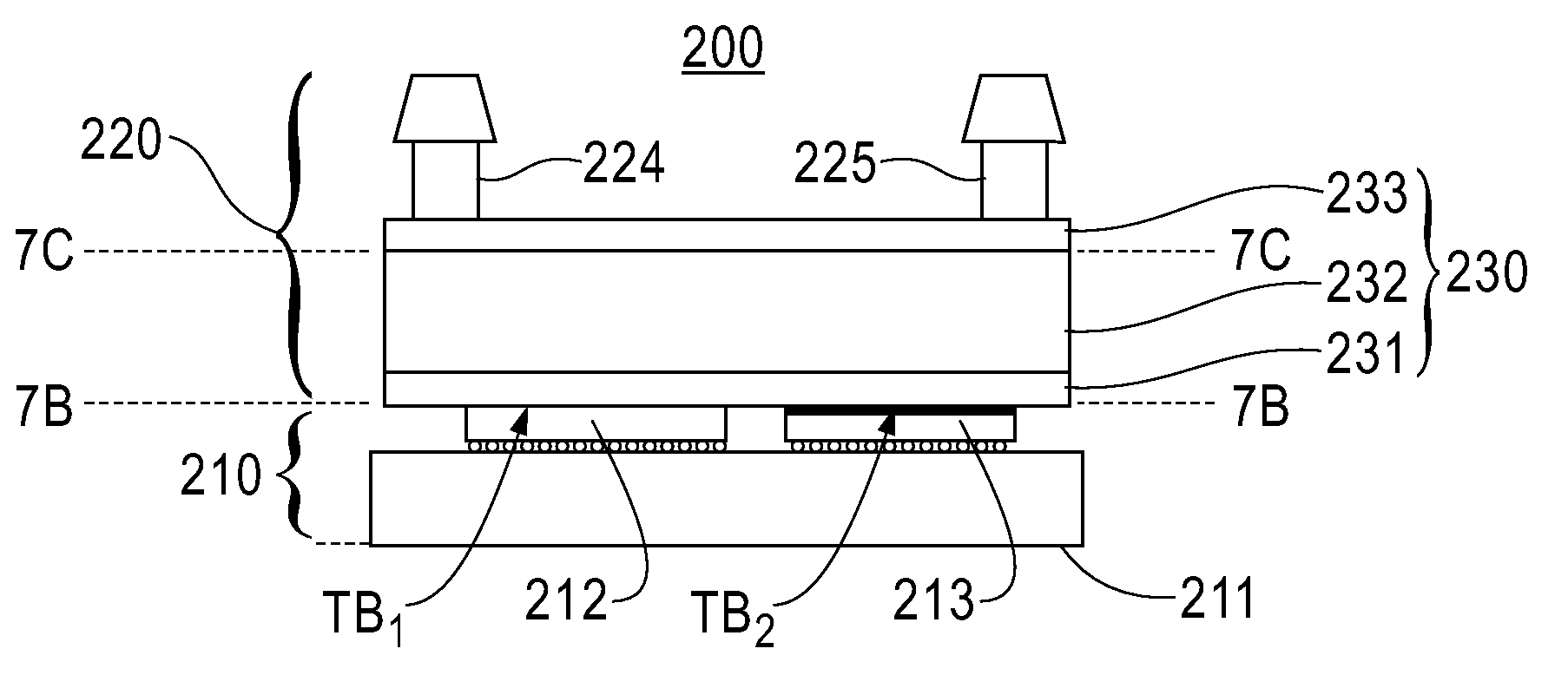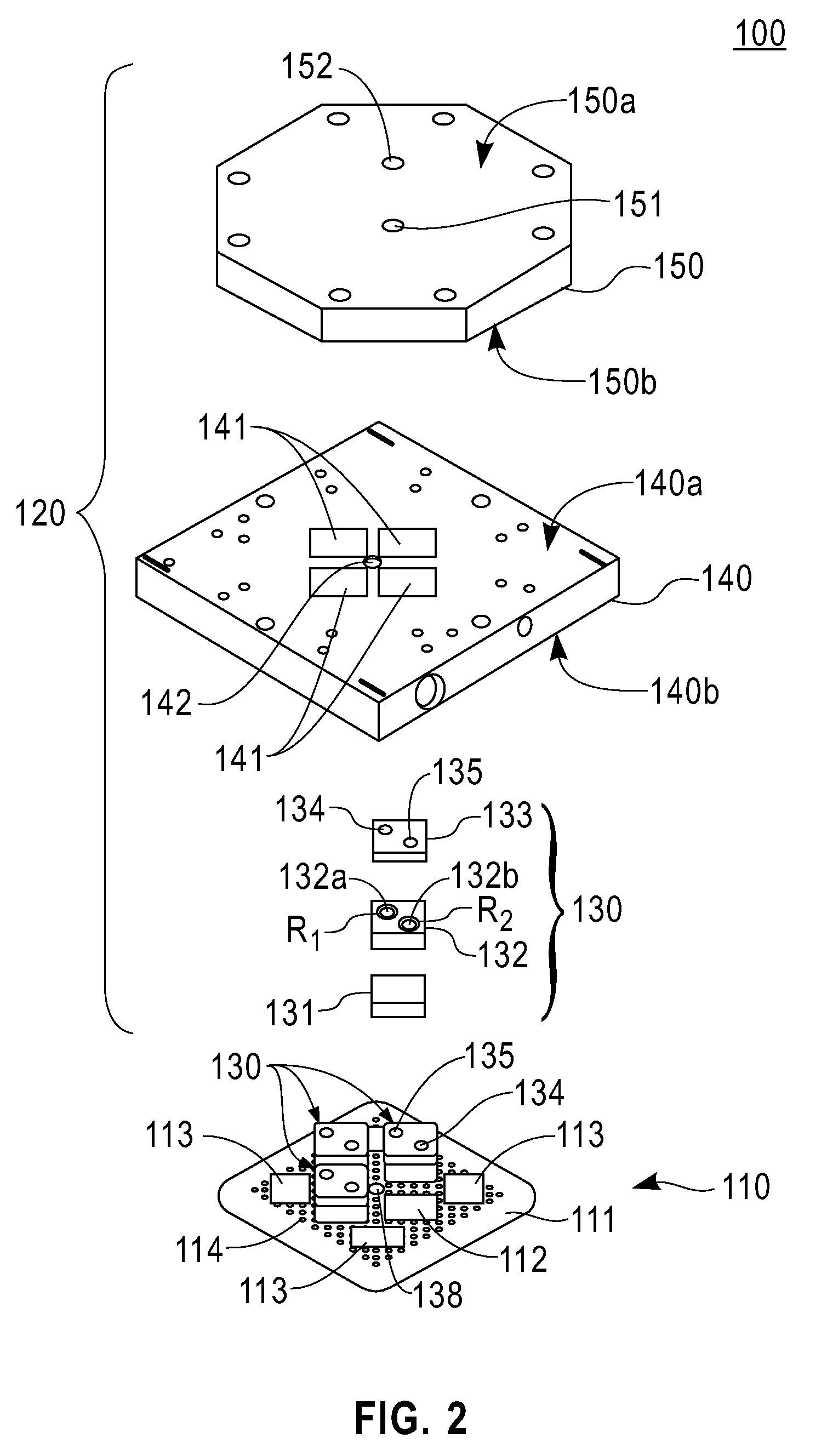Apparatus and Methods for High-Performance Liquid Cooling of Multiple Chips with Disparate Cooling Requirements
a multi-chip, liquid cooling technology, applied in the direction of electrical apparatus casing/cabinet/drawer, instrument, etc., can solve the problems of increasing power density, increasing system performance limitations, and increasing the problem of effective heat removal, so as to reduce mechanical stresses in thermal bonds and effectively conduct heat
- Summary
- Abstract
- Description
- Claims
- Application Information
AI Technical Summary
Benefits of technology
Problems solved by technology
Method used
Image
Examples
Embodiment Construction
[0033]FIG. 1 is a schematic cross-sectional view of an electronic module according to an exemplary embodiment of the invention, which provides high-performance liquid cooling of a multi-chip module having multiple IC chips with disparate cooling requirements mounted face down on a common carrier. More specifically, FIG. 1 schematically illustrates an electronic module (1) comprising an IC chip module (10) with a plurality of IC chips (12) and (13) mounted face down on a multi-chip carrier (11), and a common liquid cooling module (20) (or cooling apparatus) that is thermally coupled to the non-active surfaces of the IC chips (12) and (13).
[0034]The chip module (10) may be a dual chip module (DCM) or multi-chip module (MCM), for example, where the IC chips (12) and (13) are mounted on the top surface of the chip carrier, which contains high density wiring, (11) arrays of fine pitch solder balls, such as C4s, (b1) and (b2) (˜0.15 mm pitch). The chip carrier (11) may be a first level pa...
PUM
 Login to View More
Login to View More Abstract
Description
Claims
Application Information
 Login to View More
Login to View More - R&D
- Intellectual Property
- Life Sciences
- Materials
- Tech Scout
- Unparalleled Data Quality
- Higher Quality Content
- 60% Fewer Hallucinations
Browse by: Latest US Patents, China's latest patents, Technical Efficacy Thesaurus, Application Domain, Technology Topic, Popular Technical Reports.
© 2025 PatSnap. All rights reserved.Legal|Privacy policy|Modern Slavery Act Transparency Statement|Sitemap|About US| Contact US: help@patsnap.com



